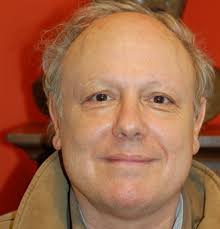
I’ve been distracted from my scheduled reading and planned posts to go back and fill in some gaps to what I wrote yesterday about Paul being cut from the Saul of the OT.
This post outlines some of what I take to be the main ideas from the first part of Paul à Patras by Maurice Mergui.
Paul’s life reads like real history or real biography. Paul is a known character when we think of him alongside the persons in the gospels. The gospel figures read more like foils set up to fulfill prophecies, teach us lessons, and so forth. Even their names are often clearly symbolic and they act out the meanings of their names almost the way we expect parables or children’s stories to read. But Paul, he has a psychology — and one that we may not always like. He has a setting, a real place in history and we know the places he visits — Antioch, Athens, Rome. He has a real name, a Roman one. He has health problems. We are told of the exact street name he was to meet someone in Damascus. All this smacks of reality.
At the same time there are real quirks in the story of Acts. The account of Paul’s conversion is told to us three times; the story is told in the third person and then suddenly without explanation switches to the first. The main character is called Saul and then suddenly he is called Paul and stays with that name to the end; geographical errors appear as when Malta is set in the Adriatic; and there are contradictions to what he wrote in his letters. Paul is both diminished and exalted in our sources. But such anomalies and contradictions are considered generally at one level to be marks of authenticity.
The story of Acts itself bears reflection. From the first chapter we have the band of disciples gathered together, determined to maintain their number of 12, commissioned to preach the message of Jesus to the end of the world. They are given the miracle of tongues to make this possible. But then from chapter 9 everything focuses on just one man, a certain Paul, who persecutes the followers of Jesus, is himself converted, changes his name, and sets out to preach the gospel. And his story it is right through to the end of the book. And the turnover event was the road to Damascus experience, an event that is told to readers three times.
So what’s this all about? Why such a break or change in story half way through?
Why does Acts “lose the plot” half way through?
Maurice Mergui regrets the way many scholars have, he claims, misunderstood and misrepresented another scholar, Georges Perec. Mergui, appealing to Perec’s insights, asks us to imagine the following scenario.
Imagine that you want to produce a story that will draw simultaneously on three different themes.
- The grandeur and the fall of the Jewish people
-
The reign of Death followed by the end of his power
-
The triumph of paganism being succeeded by the universal conversion of pagans
But keep in mind: the rule is that each of these three themes must be addressed simultaneously, not one after the other, in the narrative. Mergui tells us that Perec believed that the Book of Acts achieved this three-fold aim. Continue reading “But WHY would Paul be made a “Midrashic” Creation?”
